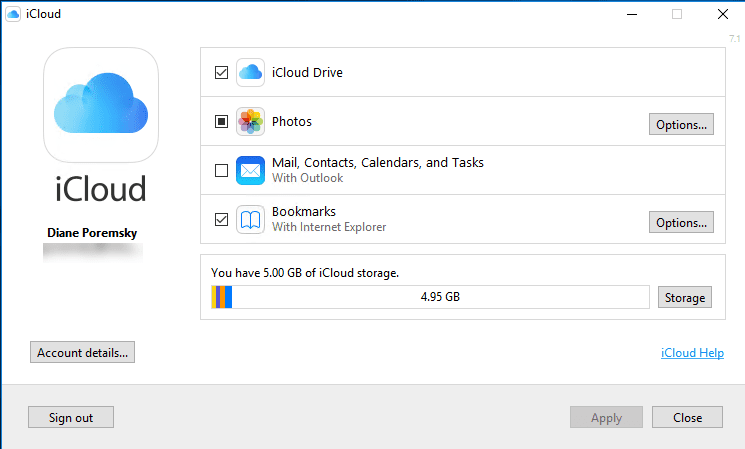

- Icloud outlook add in not loading regedit fix password#
- Icloud outlook add in not loading regedit fix Pc#
- Icloud outlook add in not loading regedit fix windows#
Icloud outlook add in not loading regedit fix password#
Most users sign in by entering their credentials, stay logged in for 10-15 minutes, and then they get a prompt asking them to re-enter the password for their accounts. Or even your internet connection setup might be responsible. When the problem has nothing to do with irregularities in the program’s code, then it might be connected to iCloud servers being overwhelmed. We believe iCloud’s continuous password demands are down to bugs or inconsistencies in the iCloud application on Windows.
Icloud outlook add in not loading regedit fix windows#
Why is iCloud always asking for a password on Windows 10? In this guide, we intend to examine a specific problem where the iCloud application keeps asking users to enter their passwords (even after successive entries). Nevertheless, users sometimes run into issues with the iCloud app.
Icloud outlook add in not loading regedit fix Pc#
The iCloud application for PC is decent for the most part. The iCloud application is far from perfect and not as good as its counterpart on OS X, but that is to be expected. Apple had to develop a Windows application for PC users because they want as many people as possible to use their cloud service. Hex value between 1 and A indicating the reason the add-in was originally disabled:Ġx00000002 Demand load (LoadBehavior = 9)Ġx00000005 Handling BeforeFolderSwitch eventĠx00000009 Crash, but not disabled because add-in is in the allow listĠx0000000A Crash, but not disabled because user selected no in disable dialog NOTE: The x.0 placeholder represents the version of Office (16.0 = Office 2016, 15.0 = Office 2013).ICloud is a popular cloud storage and computing service from Apple.

HKEY_CURRENT_USER\Software\Microsoft\Office\x.0\Outlook\Resiliency\DoNotDisableAddinList If the user chooses "Always enable this add-in", the registry is updated to include details about the add-in that is to be exempted from the automatic disabling feature. If the Block all unmanaged add-ins policy setting is enabled, then all add-ins are blocked.Īdd-ins that are disabled by this policy will never be disabled by the Outlook add-in disabling feature, which disables add-ins for performance, resiliency, or reliability reasons. If you disable or don't enable this policy setting, the list of managed add-ins will be deleted. Use the Registry Editor on the client computer where the add-in is installed, in order to obtain the ProgID for an add-in: HKEY_LOCAL_MACHINE\SOFTWARE\Microsoft\Office\Outlook\Addins or HKEY_CURRENT_USER\SOFTWARE\Microsoft\Office\Outlook\Addins NOTE: Here, the term "managed" refers to add-ins that are handled by the group policy, and does not relate to add-ins being developed in managed programming languages.Ģ = configurable by the user and not blocked by the Block all unmanaged add-ins policy setting when enabled. This policy setting allows you to specify the list of managed add-ins are always enabled, always disabled (blocked), or configurable by the user. Office 2013: HKEY_CURRENT_USER\Software\Policies\Microsoft\Office\15.0\Outlook\Resiliency\AddinList Office 2016: HKEY_CURRENT_USER\Software\Policies\Microsoft\Office\16.0\Outlook\Resiliency\AddinList Group policy will always override user settings and users are prevented from changing add-in settings for add-ins that have been configured by the group policy List of Managed Add-ins.įor Outlook, the registry keys and settings are described in the following tables. Beginning with Office 2013, system administrators can configure an enhanced level of control for add-ins by using group policy. The user has control over which add-ins run on their computer. System administrator control over add-ins

Polling is an expensive operation, so always prefer an event-driven model over polling.

In Outlook 2013, calls to the Outlook object model return E_RPC_WRONG_THREAD when the Outlook object model is called from a background thread. Avoid making long-running Outlook object model calls if possible. If possible, cache data locally rather than making expensive network calls during the FolderSwitch and BeforeFolderSwitch events of an explorer, or Open events of an item.īe aware that all calls to the Outlook object model execute on Outlook's main foreground thread. If you have long-running tasks such as making an expensive connection to a database, defer those tasks to occur after startup. Prefer native COM add-ins over managed add-ins because managed add-ins must incur the overhead of loading the. While most add-ins will not be disabled by the add-in disabling feature, you don't want your add-in to be disabled consistently.įollowing are some suggestions for improving add-in performance: However, you can re-enable add-ins and prevent add-ins from being auto-disabled by other Office programs. Programs in Office 2013 and later versions provide add-in resiliency, meaning that apps will disable an add-in if it performs slowly.


 0 kommentar(er)
0 kommentar(er)
